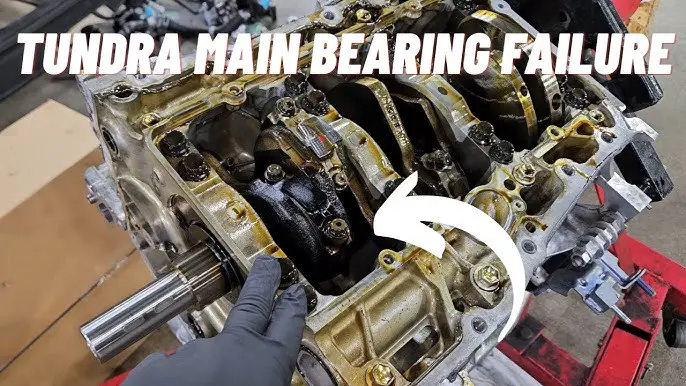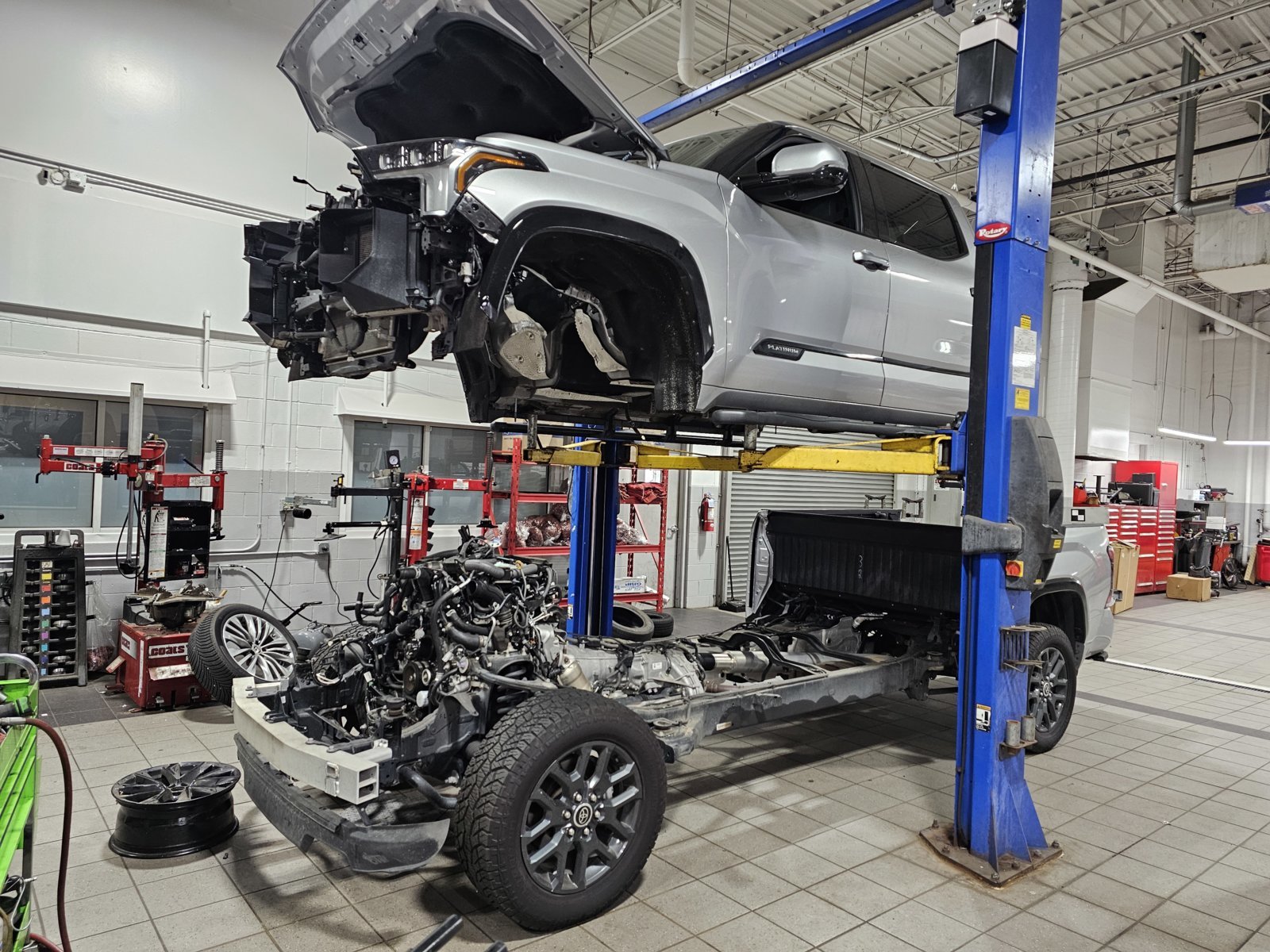The Toyota Tundra has long been celebrated for its robust build, impressive towing capacity, and overall reliability. As one of the most popular full-size pickup trucks in the United States, it has garnered a loyal following among truck enthusiasts.
| Problem | Affected Models | Causes | Symptoms | Solutions |
|---|---|---|---|---|
| Oil Consumption | 2007-2011 5.7L V8 | Faulty piston rings, cylinder wear | Low oil light, blue smoke | TSB fix, ring/engine replacement |
| Exhaust Manifold Leaks | 4.6L & 5.7L V8 | Loose bolts, gasket wear | Ticking noise, CEL, exhaust smell | Retorque bolts, replace gaskets/manifold |
| Air Injection Failure | 2000-2003 4.7L V8 | Pump failure, clogged lines | CEL (P0411, P0412), rough idle | Replace pump, clean/replace lines |
| Timing Chain Issues | 1999-2004 3.4L V6, Early 4.0L V6 | Tensioner wear, chain stretch | Rattling noise, misfires | Replace tensioner/chain system |
| Starter Motor Problems | 2007-2011 | Faulty solenoid, worn brushes | Clicking, won’t crank, grinding | Replace solenoid/starter |
| Carbon Buildup | 2016+ 3.5L V6 (DI) | Direct injection design | Rough idle, power loss | Chemical clean, walnut blasting |
| ECM/TCM Issues | Various | Software glitches, component failure | Erratic shifting, power loss | Software update, component replacement |
| Cooling System Problems | Heavy towing models | Faulty pump, thermostat, leaks | Overheating, coolant loss | Replace pump, thermostat, radiator |
Additional Notes:
- Preventive measures include regular maintenance, quality oil, and prompt issue addressing.
- Direct injection engines may benefit from an oil catch can.
- Always respect towing limits to avoid engine strain.
- Consult professionals for accurate diagnosis and repair.
However, even the mighty Tundra isn’t immune to engine issues. In this in-depth blog post, we’ll explore the most common Toyota Tundra engine problems, their causes, symptoms, and potential solutions.
1. Oil Consumption Issues in 5.7L V8 Engines
One of the most notorious problems affects Tundras equipped with the 5.7L V8 engine, particularly those manufactured between 2007 and 2011. Many owners have reported excessive oil consumption, with some vehicles burning through a quart of oil every 1,000 to 1,500 miles.
Causes:
- Faulty piston rings that don’t properly seal the combustion chamber
- Cylinder wall scoring or wear
- PCV (Positive Crankcase Ventilation) valve issues
Symptoms:
- Low oil level warning light
- Blue smoke from exhaust
- Decreased fuel efficiency
- Engine knocking or ticking sounds
Solutions:
- Toyota issued a Technical Service Bulletin (TSB) for certain models
- Piston ring replacement
- In severe cases, complete engine replacement
2. Exhaust Manifold Leaks
Another prevalent issue in Tundras, particularly those with the 4.6L and 5.7L V8 engines, is exhaust manifold leaks. This problem is often more noticeable in colder climates or during cold starts.
Causes:
- Bolts loosening due to heat cycling
- Gasket deterioration
- Cracked manifold from heat stress
Symptoms:
- Ticking or tapping noise, especially when cold
- Check Engine Light (CEL) due to oxygen sensor readings
- Decreased power and fuel economy
- Exhaust smell in the cabin
Solutions:
- Retorquing manifold bolts
- Replacing gaskets
- In severe cases, replacing the entire manifold
3. Air Injection System Failure
The Air Injection System, designed to reduce emissions by pumping air into the exhaust to help burn unburned fuel, is another trouble spot in many Tundras, especially 2000-2003 models with the 4.7L V8.
Causes:
- Air injection pump failure
- Clogged or leaking air injection lines
- Faulty check valves
Symptoms:
- Check Engine Light with specific codes (P0411, P0412)
- Rough idling
- Failed emissions tests
- Reduced fuel efficiency
Solutions:
- Replacing the air injection pump
- Cleaning or replacing air lines
- Replacing faulty check valves
4. Timing Chain Tensioner Issues
Tundras with the 3.4L V6 engine (1999-2004 models) and some early 4.0L V6 engines have experienced problems with their timing chain tensioners, a critical component that maintains proper chain tension.
Causes:
- Tensioner wear or failure
- Chain stretching over time
- Oil sludge buildup
Symptoms:
- Rattling noise from the engine’s front
- Poor engine performance
- Engine misfires
- In severe cases, engine failure
Solutions:
- Replacing the timing chain tensioner
- Replacing the entire timing chain system
- Regular oil changes to prevent sludge
5. Starter Motor Problems
While not strictly an engine issue, starter motor problems are common enough in Tundras (particularly 2007-2011 models) to warrant mention, as they directly affect engine operation.
Causes:
- Faulty starter solenoid
- Worn starter motor brushes
- Damaged flywheel teeth
Symptoms:
- Clicking sound when turning the key
- Engine won’t crank or starts intermittently
- Grinding noise during start attempts
Solutions:
- Replacing the starter solenoid
- Installing a new starter motor
- In some cases, repairing the flywheel
6. Carbon Buildup in Direct Injection Engines

Newer Tundras with direct injection engines (like the 3.5L V6 introduced in 2016) are susceptible to carbon buildup on intake valves and ports.
Causes:
- Direct injection technology doesn’t allow fuel to clean valves
- EGR (Exhaust Gas Recirculation) system contributes to buildup
- Oil vapor from PCV system
Symptoms:
- Rough idling
- Power loss
- Misfires
- Poor fuel economy
Solutions:
- Chemical cleaners (limited effectiveness)
- Walnut blasting (professional service)
- Installing an oil catch can
7. Transmission and Engine Control Module Issues
Some Tundra owners have reported problems with their Engine Control Module (ECM) or Transmission Control Module (TCM), which can manifest as engine issues.
Causes:
- Software glitches
- Component failure
- Water or physical damage
Symptoms:
- Erratic shifting
- Sudden power loss
- Check Engine Light with various codes
- Engine stalling
Solutions:
- ECM/TCM software update
- Component replacement
- In rare cases, wiring harness repair
8. Cooling System Problems
Certain Tundra models, especially those used for heavy towing, can experience cooling system issues that affect engine performance.
Causes:
- Faulty water pump
- Thermostat failure
- Radiator leaks or clogs
Symptoms:
- Engine overheating
- Coolant loss
- White smoke from exhaust (if coolant enters combustion chamber)
- Reduced power under load
Solutions:
- Water pump replacement
- New thermostat installation
- Radiator repair or replacement
Preventive Measures
To minimize the risk of these engine problems, Tundra owners should:
- Follow Toyota’s recommended maintenance schedule
- Use high-quality motor oil and change it regularly
- Be cautious with cold starts, allowing proper warmup
- Address any unusual noises or performance issues promptly
- Consider installing an oil catch can for DI engines
- Be mindful of towing limits to avoid overstraining the engine
Conclusion
The Toyota Tundra, despite its reputation for reliability, has its share of engine problems. From oil consumption issues in older 5.7L V8s to carbon buildup in newer direct injection engines, these problems span various model years and engine types. While some issues are more serious than others, most can be effectively addressed with timely diagnosis and repair.
If you own a Tundra, staying informed about these potential issues can help you catch problems early, saving you time, money, and frustration. Always consult a qualified mechanic or Toyota dealership when dealing with engine issues, as they have the expertise and tools to properly diagnose and fix these problems.
Remember, while this blog post covers many common Tundra engine problems, it’s not exhaustive. Each vehicle is unique, and individual experiences may vary. Regular maintenance, attentive driving, and prompt problem-solving are your best defenses against major engine issues, ensuring your Tundra serves you reliably for many miles to come.



[…] Tundra Engine Problems: A Comprehensive Guide for Toyota Owners […]
[…] Tundra Engine Problems: A Comprehensive Guide for Toyota Owners […]